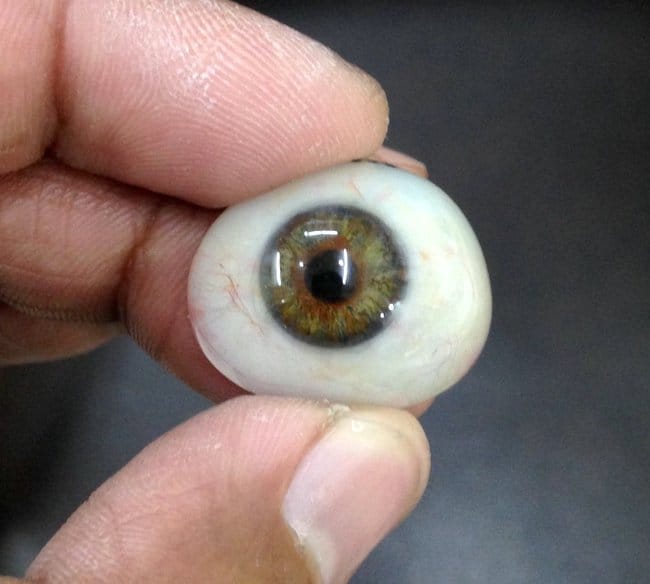The healthcare field is one that has undergone all kinds of changes thanks to advances in technology and research. Researchers and doctors are finding new cures and solutions for various medical issues, providing hope to people all around the world.
One industry within the healthcare field that has enjoyed huge advancements is the prosthetic industry. All you have to do is take a look at the statistics that show over two million people in the United States alone use a prosthetic leg or arm and it's clear just how far things have come.
 As technology evolves and prosthetics become even better, all kinds of new possibilities are opening up. Where a decade ago the idea of a prosthetic eye may have seemed far-fetched, today, it is a reality for many people across the country. A prosthetic eye is meant to look just like a real eye, and at the same time should be comfortable for the person to wear without issue. It can provide the person with confidence and make them feel more “normal” if they have lost an eye due to an illness or injury.
As technology evolves and prosthetics become even better, all kinds of new possibilities are opening up. Where a decade ago the idea of a prosthetic eye may have seemed far-fetched, today, it is a reality for many people across the country. A prosthetic eye is meant to look just like a real eye, and at the same time should be comfortable for the person to wear without issue. It can provide the person with confidence and make them feel more “normal” if they have lost an eye due to an illness or injury.
If a prosthetic eye is something that you have been looking into and aren’t sure if it’s the right decision, then research is usually your best course of action. This guide to prosthetic eyes should help to clear up many of the questions you are currently asking.
What Is a Prosthetic Eye?
While people may be familiar with prosthetic limbs, a prosthetic eye may be something relatively unknown to them. The prosthetic is made up of an outer shell that is white and oval shaped, meant to look just like your own eye, and then it features a round portion that is painted to look like your pupil and iris. The goal is to create an eye that looks like the other one, so the majority of people aren’t going to notice any sort of difference.
The prosthetic eye doesn't mean sight is returned, it just gives the illusion that the eye is still intact. Once the prosthetic is in place, the person will have a proper functioning eyelid.

Why Would You Need a Prosthetic Eye?
There are a number of reasons a person may need or want a prosthetic eye. Usually, it is recommended by the doctor if the eye was surgically removed in response to a disease or damage to the eye. Common reasons for prosthetic eyes include an eye tumor, an infection of the eye, glaucoma, or an injury.
Should Your Prosthetic Eye Be Custom Made
Because each person's eyes are unique to them, it's important people use a prosthetic eye that has been custom made. It needs to fit that specific person's eye socket so as to look real. When the prosthetic is hand painted, it will help to make it look even more realistic since the person's eye color can be matched perfectly. A prosthetic eye shouldn’t be a one-size-fits-all approach, as the patient won’t end up with the results they are after.
How is the Prosthetic Eye Put in Place?
In order to secure the prosthetic eye, surgery will be needed. There are two main types of methods that are used, which are enucleation and evisceration. The surgeon will make the decision based on how damaged the eye area is and what kind of medical eye issue the person has.
It should be noted that prosthetic eyes aren't permanent and will need to be replaced every five to seven years. As well, it may need to be modified or replaced if the person experiences chronic infections, excessive tearing, a lack of movement, drooping of the upper lid, dryness on a regular basis, eye irritation, and color changes.
Caring for Your Prosthetic Eye
There is also care and maintenance that goes along with a prosthetic eye, which the doctor will be able to discuss. Typically, they will talk to you about safe and proper handling, caring for, and cleaning of the prosthetic eye. Generally, it is recommended that you clean the eye once daily.
Another common concern or question that patients have is whether or not they can wear their prosthetic eye while sleeping. This is something that will need to be discussed with your doctor or ocularist, as it depends on your medical situation and the damage to your eye. If you are told to take it out nightly, you will want to ask how you should store it.
Technology Has Progressed by Leaps in Bounds in Prosthetics
Technology has taken the healthcare industry to incredible new areas, many of which weren’t even imaginable just a decade ago. Prosthetics is one area that is enjoying all kinds of growth and advancements, which is benefiting patients all around the world.
